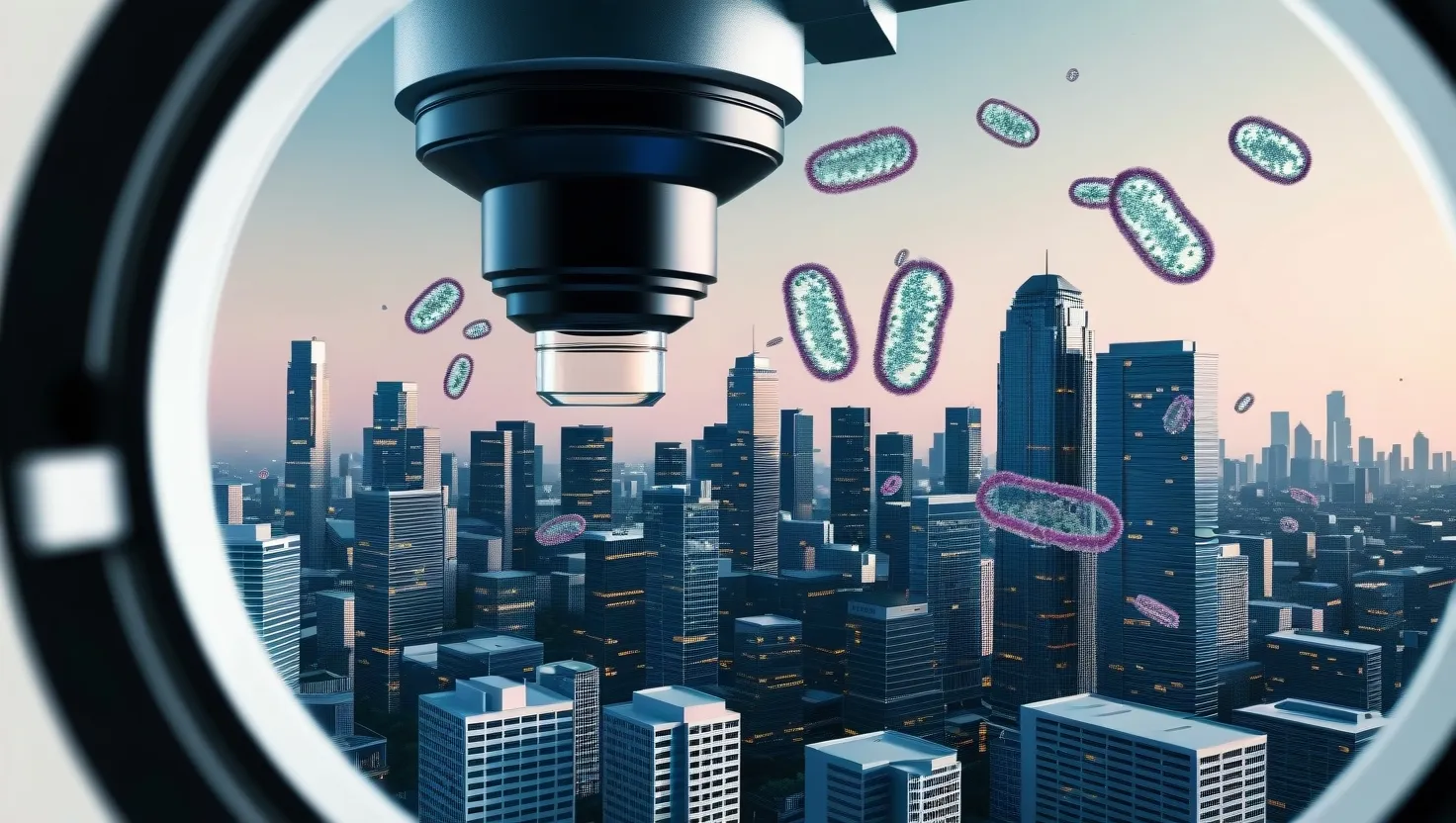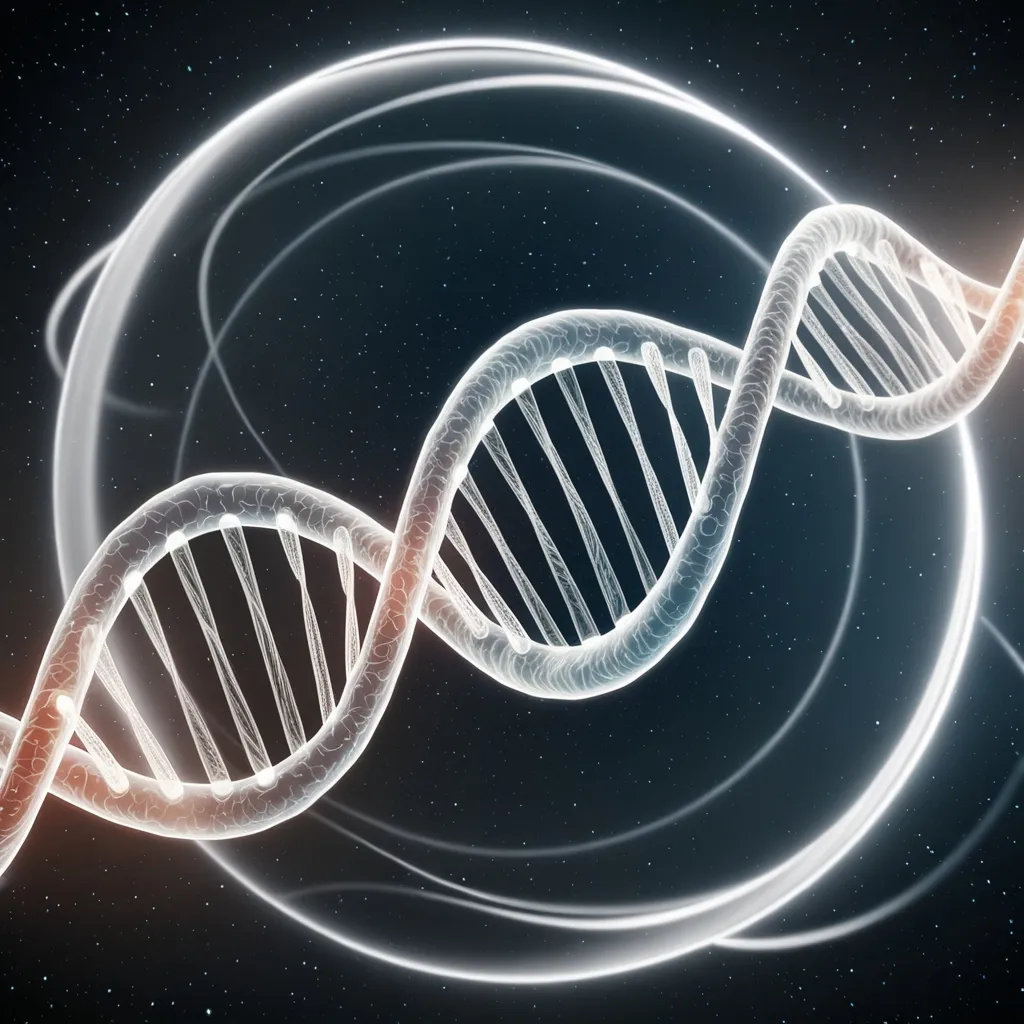The bustling metropolis teems with life, not just the visible kind we encounter daily, but a hidden world of microscopic organisms that have made our urban environments their home. These tiny creatures, adapting and thriving in the most unexpected places, are reshaping our understanding of city ecosystems.
Let’s start our journey into this invisible realm right where we live and work - our buildings. Every surface, from the sleek glass facades to the rough concrete walls, hosts a diverse community of microorganisms. These building-dwelling microbes aren’t just passive inhabitants; they’re active participants in creating mini-ecosystems. They form biofilms - thin, slimy layers that can protect the underlying surface from weathering or, in some cases, contribute to its degradation.
“In nature, nothing exists alone.” - Rachel Carson
This quote from the renowned environmentalist reminds us that even in our most artificial environments, interconnected ecosystems persist. Have you ever considered how the microbes on your office window might be interacting with the air pollution outside?
Moving underground, we find another fascinating microbial habitat - the subway system. Each city’s subway has its own unique bacterial fingerprint, influenced by factors like local climate, passenger traffic, and cleaning routines. In New York City’s subway, researchers have found microbes typically associated with everything from cheese production to the depths of the Antarctic. It’s like a microbial melting pot, reflecting the diversity of the city above.
But it’s not just about diversity; it’s about adaptation. Many of these subway-dwelling microbes have developed resistance to harsh cleaning chemicals and even certain metals used in train construction. This resilience raises questions about the long-term effects of our cleaning practices and material choices. Are we inadvertently creating super-microbes in our efforts to maintain sterile environments?
Air conditioning systems, those unsung heroes of modern comfort, harbor their own complex microbiomes. As air circulates through these systems, it carries a variety of microorganisms. Some of these microbes settle in the damp, dark corners of the AC units, forming colonies that can impact air quality and system efficiency. But it’s not all bad news - some of these microorganisms might actually help filter out harmful particles from the air.
“The microbe is nothing; the terrain is everything.” - Louis Pasteur
Pasteur’s insight applies just as much to our urban terrain as it does to the human body. How might the microbial communities in our AC systems be shaping the ‘terrain’ of our indoor environments?
Urban dust, often considered nothing more than a nuisance, is actually a thriving microbial habitat. These tiny particles, a mix of soil, pollution, and organic matter, carry an astonishing array of microorganisms. As they float through our cities, they disperse these microbial hitchhikers, potentially influencing everything from local weather patterns to human health.
Some of the most intriguing urban microbes are those with an appetite for our infrastructure. Concrete-eating bacteria, for instance, are a growing concern for city planners and engineers. These microorganisms secrete acids that can slowly erode concrete structures, potentially compromising the integrity of buildings and bridges over time. However, this ability to break down concrete isn’t all bad - some researchers are exploring ways to use these bacteria to heal cracks in concrete, potentially extending the lifespan of our infrastructure.
In our efforts to tackle the growing problem of urban waste, we might find unlikely allies in plastic-degrading microorganisms. These remarkable creatures have evolved to break down synthetic materials that have only existed for a few decades. Found in landfills and waste processing facilities, these microbes offer a glimmer of hope in our battle against plastic pollution. But their existence also raises uncomfortable questions about the permanence of our impact on the environment. If microbes can evolve to eat our waste in such a short time, what other changes might we be inadvertently driving in the microbial world?
“The greatest enemy of knowledge is not ignorance, it is the illusion of knowledge.” - Stephen Hawking
This quote serves as a reminder to remain curious and open-minded, especially when it comes to the microscopic world that we’re only beginning to understand. What other microbial adaptations might be occurring right under our noses?
One of the more concerning discoveries in urban microbiology is the prevalence of antibiotic-resistant bacteria in city water systems. These ‘superbugs’ have developed resistance to our most potent medicines, partly due to the presence of antibiotic residues in our wastewater. The dense population and extensive healthcare systems in cities create perfect conditions for these resistant strains to emerge and spread. This phenomenon highlights the intricate connections between human activity and microbial evolution, and the urgent need for more sustainable approaches to both water treatment and antibiotic use.
The interactions between microbes and building materials offer another fascinating area of study. Different materials - wood, metal, plastic, stone - each host distinct microbial communities. These microorganisms can influence the durability and appearance of our buildings in ways we’re only beginning to understand. Some might accelerate decay, while others could potentially offer protective benefits. This knowledge could revolutionize how we design and maintain our urban structures, leading to more resilient and sustainable cities.
As we delve deeper into the world of urban microbes, we’re forced to reconsider our relationship with these invisible inhabitants of our cities. They’re not just passive occupants, but active participants in shaping our environment. They clean our water, break down our waste, influence our health, and even alter our buildings. Understanding and working with these microbial communities could be key to creating more sustainable, resilient urban environments.
But this knowledge also comes with responsibility. As we uncover the complex web of microbial life in our cities, we must consider the implications of our actions on these ecosystems. How might our choices in urban planning, waste management, and even personal hygiene be affecting these microbial communities? And in turn, how might these changes impact our own health and well-being?
The study of urban microbes is still in its infancy, with new discoveries being made all the time. Each finding opens up new questions and possibilities. Could we harness building-dwelling microbes to create self-cleaning surfaces? Might we use subway bacteria to develop new antibiotics? Could plastic-eating microbes be the key to solving our waste crisis?
As we continue to explore this microscopic frontier, one thing becomes clear: our cities are far more alive than we ever imagined. The concrete jungle is teeming with life at every scale, from the towering skyscrapers to the tiniest bacteria. By understanding and working with these microbial communities, we have the opportunity to create urban environments that are not just habitable, but truly thriving ecosystems.
“The more clearly we can focus our attention on the wonders and realities of the universe about us, the less taste we shall have for destruction.” - Rachel Carson
This sentiment from Carson encapsulates the potential impact of our growing understanding of urban microbial life. As we uncover the intricate, interconnected nature of life in our cities, perhaps we’ll develop a greater appreciation for the delicate balance we must maintain.
In the end, the story of urban microbes is our story too. It’s a tale of adaptation, resilience, and unexpected consequences. It reminds us that even in our most human-centric environments, we are part of a larger biological community. As we move forward in our urban development, how can we do so in a way that respects and works with these microbial ecosystems rather than against them? The answers to these questions may well shape the future of our cities, our health, and our relationship with the microscopic world that surrounds us.






